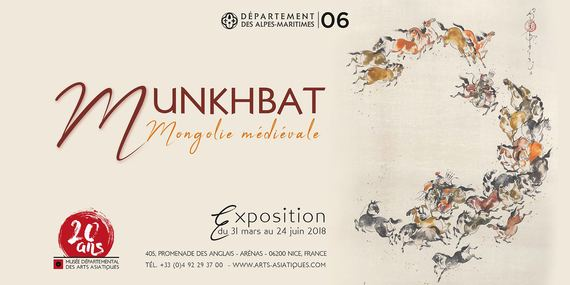During seven centuries and up until the last century, Mongolia sometimes dominated China, and sometimes was dominated by it, with both countries retaining their differences, whether ethnic, linguistic, or cultural. However, the pictorial art of calligraphy and Chinese ink drawing was one of the characteristic features of these two peoples.
Munkhbat, a contemporary Mongolian artist, stands directly in line with the tradition inherited from the Middle Ages.
He connects to it through the themes he explores: the omnipresence of horses in the Mongolian steppe, the lives of princes and princesses, great horseback hunts, and polo games. He is also linked to it by the pictorial method inspired by ancient China — that of drawing with Chinese ink. His only concession to modernity is the addition of color blocks created with gouache within the contours drawn with Chinese ink, which makes the paintings more vibrant and bright without altering the sobriety of the whole.
Authenticating his canvases with an elegant signature in “Uyghur” characters, the artist claims adherence to tradition, allowing us to dream of the mythical past of ancient Mongolia.
Munkhbat is one of the contemporary heirs of this centuries-old tradition. He is not a painter of nature. His sole interests are human beings and horses. He almost always depicts them in motion, but gracefully, without haste, as if they participate in a sort of ballet. His paintings evoke the wild freedom of horses in the steppes, the musical games of the elites, the mastery of hunting techniques, and the joy of playing polo. The key words that could characterize Munkhbat’s pictorial work are: harmony, softness, light, joy.


